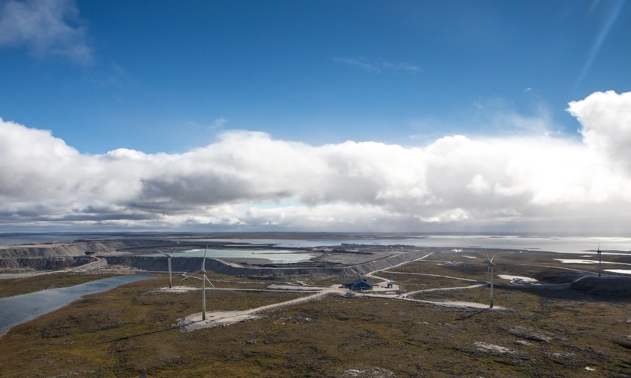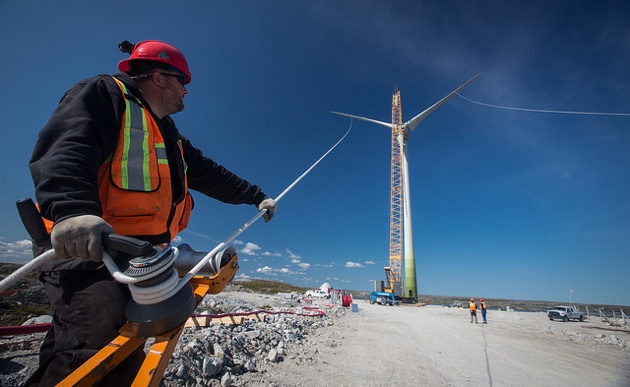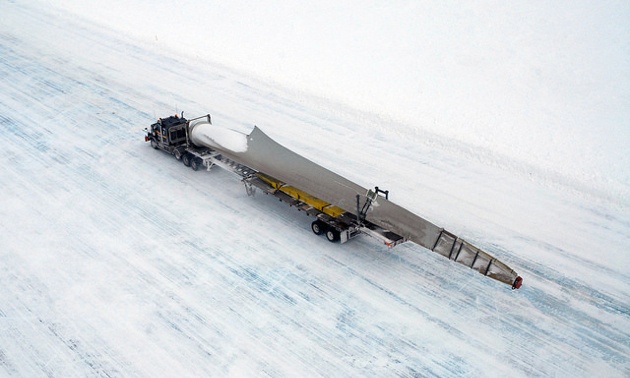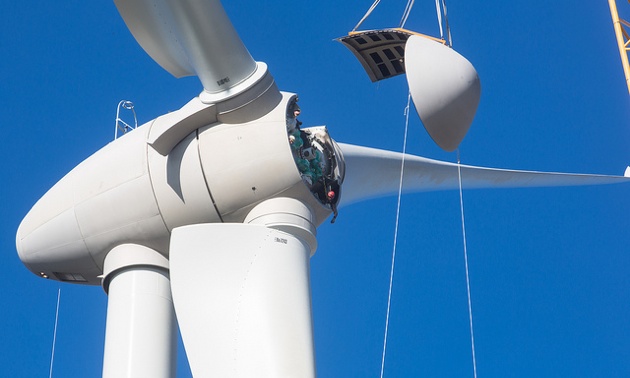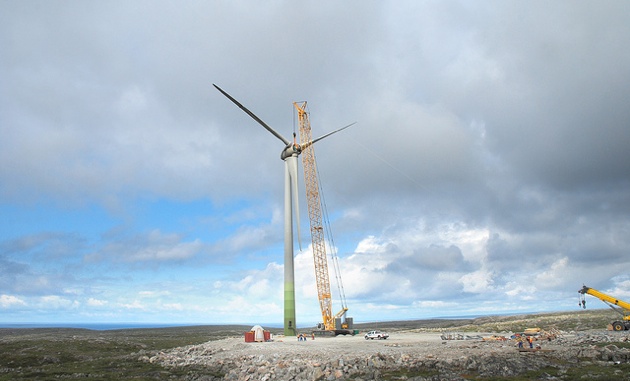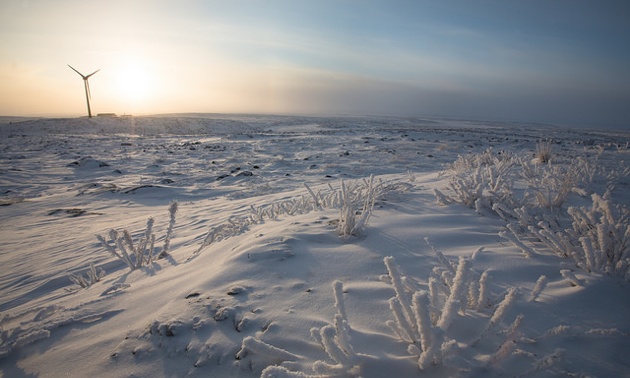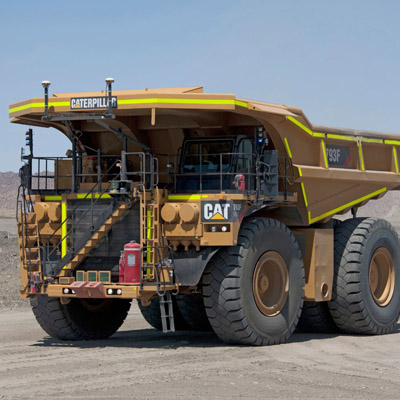Diavik Diamond Mine powers up with wind
Diavik Diamond Mine has the northernmost large-scale wind-diesel hybrid power facility in the world.
Diavik has been mining in the Northwest Territories (NWT) for 11 years. Up until 2012, its full production underground operation relied completely on diesel power generation, which required 50 million litres of fuel be transported over the 353 kilometre ice road each winter. The bill was tallying up to around $70 million annually.
Although the company has always had an interest in environmental protection, the need for an alternative energy source became abundantly clear during the winter of 2006, which was uncharacteristically mild.
“The ice road was late to construction, never reached full weight capacity, and was early to melt,” said Doug Ashbury, advisor of communications for Diavik. “Diesel is the single largest commodity we bring in on the ice road, so in 2006 we had to fly in several million litres of fuel. It really opened our eyes to the risk of only having one fuel source.”
Although subsequent winters have been adequately cold to sustain the temporary ice road, Diavik remained committed to discovering a new way to top up its existing power supply.
The company explored solar power, but the mine’s location at 64 degrees means there is a lot of darkness in the winter; nuclear power, a regulatory challenge; geothermal; and wind, which proved the best overall option.
“We installed a meteorological tower to collect wind data over three years and determine if a resource exists,” said Ashbury. “We determined it was feasible and with all factors considered, it was a go.”
Not your average turbines
Diavik concluded that the most economical and effective arrangement comprised a four-turbine wind farm designed to provide 10 per cent of the mine’s power needs.
Given the mine’s extreme location, the turbines are a force to be reckoned with. Each 100-metre-high assembly features an Enercon E70 generator with gearless direct-drive design and sports three 33-metre epoxy-resin blades. Each blade weighs a hefty 6.5 tonnes and has a top running speed of 285 kilometres per hour at the tip.
The blades are fitted with de-icing technology to withstand temperatures as cold as minus 40 degrees Celsius. In fact, they represent a new benchmark for wind generation in low temperatures.
Diavik worked with the manufacturer to extend the turbines’ capacity from its previous operational maximum of minus 30, “since a good portion of Diavik’s wind resource occurs between minus 30 and minus 40 degrees Celsius,” said Ashbury.
Each turbine sits on a base made up of 20 kilometres of reinforced steel and 306 cubic metres of concrete. At 416 feet above sea level, prevailing northwest and southeast winds kick up at an average 26 kilometres per hour, although they have been measured as fast as 122 kilometres per hour and have, for very brief times, supplied as much as 58 per cent of the plant’s operational energy requirements.
The wind farm’s total installed demonstrated capacity is 9.2 MW with a 17 GWh annual production. It produced 8.5 per cent of the mine’s power in 2013 and 11.2 per cent in the first quarter of 2014. In 2013, it saved Diavik 3.8 million litres of fuel, or $5 million, and cut back on the winter road fuel haul by approximately 75 loads.
At current capacity, the $31 million capital investment will pay for itself over eight years.
Longest load in history
Like any operation in a remote area completely void of infrastructure, the project’s construction posed some challenges, including transporting the turbines, piece by piece, to the mine site 300 kilometres north of Yellowknife.
The ice road begins 50 kilometres outside of Yellowknife; 80 per cent of it traverses ponds and lakes, with roughly 65 portages in between.
The turbines represented the longest load is history to make the journey over the ice road—a process that required custom trailers and a plan.
“The 33-metre length of the blades posed challenges in terms of how they were manoeuvred and with elevation,” said Ashbury. “We had to do some work to make sure the trailers could articulate properly.”
After 60 loads, the turbines were assembled in 2012 and began sending power to Diavik in September of that year.
Challenged by winter
The first winter Diavik’s wind farm was operational was one of coldest on record and challenged the team to find out just what the system was capable of.
A build-up of frost on the blades was mitigated by an adjustment to the defrosting technology, which blows warm air along channels on the blades’ leading edges. This technology was replaced and the nacelle and base were retrofitted with heaters. The lubrication was also adjusted to account for the temperature and weather conditions.
“The technology was new, and having to make those adjustments was not unexpected,” said Ashbury. “One of the benefits was that this project was built by Diavik and we did everything we needed to understand it, commission it and integrate the power into our grid.”

